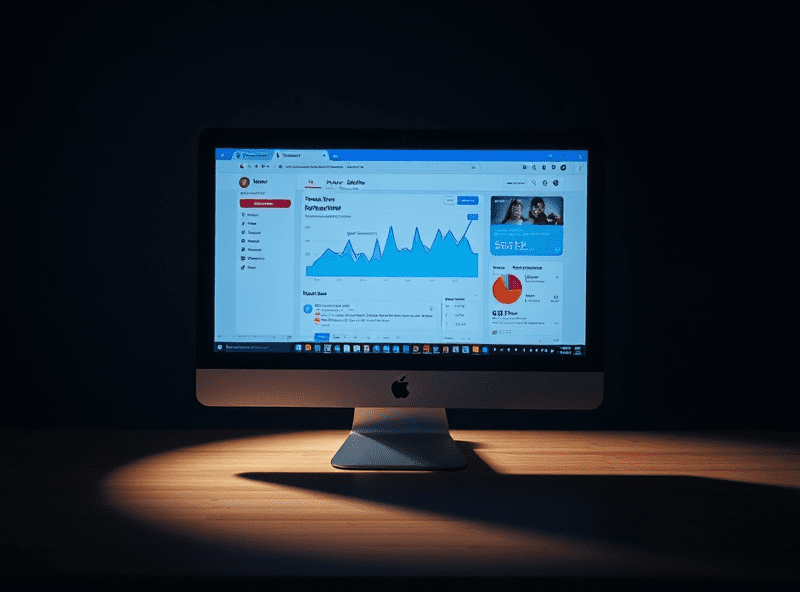Organizing Blog Promotion Across Multiple Channels Without Burning Out
Tagging Is Not Just Metadata—It’s Memory Management for Humans
If you’re doing blog promotion across more than, say, three platforms without standardized tagging, you’re flying blind. Tagging does a lot more than group content—it gives you pattern recognition. Once you’ve posted the same article 14 different ways across LinkedIn, Twitter (er, X), a newsletter, and like 5 Medium clones, your brain stops tracking what happened where. Tagging lets you see which version titles or formats actually got clicks.
Airtable’s tagging system saved my brain more than once. I had six variations of one case study post written for different audiences: developer, founder, agency head, etc. But I only realized the performance impact of each variant when I retroactively implemented a tag slice by voice/tone. Casual ones always outperformed, which annoyed me because I spent more time making the formal ones. Guess no one likes to read like they’re being audited.
When Not to Cross-Post (Even Though You Want To)
It’s incredibly tempting to take a really solid blog piece and just spam-blast it everywhere with minor tweaks. But that doesn’t work equally well across all promotion surfaces. I posted a mid-length marketing tech explainer on both Indie Hackers and Dev.to once, two hours apart. It bombed on Indie Hackers, where people skew product-driven, but blew up unexpectedly on Dev.to—because apparently I referenced something that hit a nerve about privacy token gating on the front-end.
Lesson learned: platforms are context-forward, not content-forward. The same article isn’t the same thing when you put it next to a different crowd. If you’re talking to crypto-friendlies, don’t lead with “decentralized infrastructure” like it’s fresh. That’s Monday’s coffee. Same logic applies in health content: Redditors on r/medicalschool want citations, Instagramers want impact. Don’t copy-paste, reformat.
Newsletter Plumbing: All UTM Codes Leak
Newsletter performance tracking is a joke until you polyfill the gaps. Most basic UTM implementations fail in real email clients anyway—you’ll get a click, but no session continuity. I sank a good half-day into figuring out why I had spikes in email click counts with zero corresponding referral data in GA. Turned out some users had VPNs rewriting headers and a few weirdos had Firebase deep link redirects that stripped UTMs entirely.
Few sharp-fix tips if you’re stuck in that swamp:
- Use a shortlink service with per-source redirects (but don’t use Bitly unless you enjoy rate limit mystery)
- Pre-resolve target IPs if you’re using server-side click tracking—slows first click, increases fidelity
- Make sure AMP emails don’t strip UTM params (looking at you, Gmail mobile)
- Use a campaign ID embedded in a hash—not query param—if you’re distributing PDFs or offline collateral
- If you’re using MailerLite, force a trailing slash or you’ll get /page and /page/ tracked as different entries
The thing that finally clicked for me: use separate UTM_source and UTM_medium for recipients vs. forwards. People forward emails a lot more than you think, especially analysts.
The Duct Tape Between Social Monitoring and Scheduled Posts
I’ve been using Buffer for years, but it has these annoying quirks where scheduled posts don’t show real metadata previews if scheduled from inside the dashboard vs. browser extension. I once scheduled an article with what I thought was a killer OG image—only to realize I had added it post-publish and Buffer was using an old cache. Facebook scraped the page 11 hours before the post went live. It looked like garbage. That stuff matters when you only get one unfurl shot per post.
If you’re promoting across platforms in a rolling window (say one post per day over six days), make sure your metadata caches are not stale on major preview scrapers:
- Facebook debugger
- Twitter card validator
- LinkedIn doesn’t have a public validator anymore—lol good luck
Oh, and if you’re updating Open Graph images with Next.js and deploying via Vercel—don’t assume rebuilds invalidate CDN cache. They don’t. Vercel’s image cache might take hours to reflect changes unless you redeploy the exact content path. Ask me how I know. (It was a bloodbath during a product launch week.)
Syndication Feeds Aren’t Passive—They’re a Job
This was my rookie mistake: assuming RSS and Atom feeds “just work.” They don’t—not consistently. Especially when working with sites like Flipboard, Feedly, or even Hacker News aggregators that pull from meta-feeds. One time, an extra trailing slash on my canonical tag made the same article show up three times under different slugs on syndication partners. Total chaos.
If you’re running multiple feeds:
- Standardize namespaces.
dc:titleandtitlecan conflict. Some feeds prefer one over the other. - Always include
guidcontent under 255 characters. Some parsers truncate and ID duplicate posts. - Ping Google’s PubSubHubbub endpoint manually if you really want it picked up quickly. Yes, it still works.
- Make sure your
lastBuildDateisn’t lagging or stale items will never propagate.
Syndication is where blog promotion starts bleeding into ops. Treat it like you’d treat backup rotation schedules—you need alerts for failures even if it’s just a cron job spewing logs somewhere in a Slack channel.
Cross-Team Channel Chaos and the Madness of Permissions
Ever try to promote content across accounts for three brands where the same four people have different roles across different Slack workspaces? Cool, me too. I once published a blog promotion schedule into a Notion doc thinking: “it’ll be collaborative, clean, visible to all.” Three hours later, nobody could edit it because Notion decided the workspace-level permissions were inherited via an org setting I didn’t know existed. We ended up copy-pasting everything into a plain Google Sheet. Janky, worked weirdly well.
Learn these, or get wrecked:
- LinkedIn page roles are extremely brittle. If someone leaves your company, it takes a support ticket to unstick access.
- Cross-posting to Reddit? Some mod bots auto-ban domains on sight if you’ve had a prior flag—even if the domain is clean now.
- Medium’s import tool sometimes strips canonical headers without warning. Always double-check post-live.
- If your CMS auto-posts to X, make sure you reauth the app token every few months—it may silently fail after minor API changes.
Oh also: Discord channel embeds vary wildly by preview format. I tried linking to the same article in different guilds and got four different link presentation formats. Some showed OG preview, some didn’t. Couldn’t make sense of it. Think it had to do with an undocumented per-server embed settings flag. Never confirmed.
The Weird Reality of Reddit as a Promotion Channel
I’ve had posts that would completely tank on Twitter get a hundred-plus shares just from one decent Reddit thread. But it’s a volatile channel. Self-promotion is a landmine, obviously, but even subtle mentions can get ghosted. There’s some weird behavioral scoring that seems to downrank comments that include shortened links—regardless of engagement quality.
I ran a tiny tracker script on some self-mentions using Cloudflare Workers and noticed something odd: link clicks per comment were higher on r/entrepreneur, but visibility dropped off once engagement hit a threshold. My theory is Reddit uses some logic that wipes high-engagement self-links from high-visibility channels to avoid algorithmic gaming. Nothing documented. Just pattern matching after like fifteen tests.
Reddit mod mail also occasionally nukes accounts with zero warning. Friend of mine set up an alt to post a summary of a blog post in r/startups and just got perma-shadowbanned without any mod messages. Took us forever to diagnose because the post would render for the alt account but not for anyone else. Total gaslighting moment.
Real-Time Feedback Doesn’t Mean Immediate Adjustment
This last one took me embarrassingly long to internalize. When you start tracking real-time blog traffic via channels, you get itchy. You see that spike on Telegram or Hacker News and suddenly want to pivot the whole post to lean into whatever phrasing triggered the click. Bad idea. That’s not feedback—it’s adrenaline analytics.
“Just because 400 people clicked in 20 minutes doesn’t mean you understood why.”
I learned this the hard way after live-editing a title mid-run because Pulse was blowing up the headline. Killed the thread continuity. Everyone who shared the old title looked like they misattributed the post. Bookmarking broke. Threads threadbare. Don’t do it.
Tag it, note it, act later.














